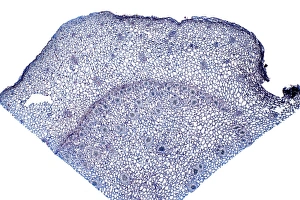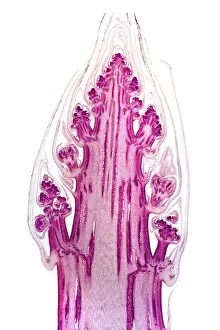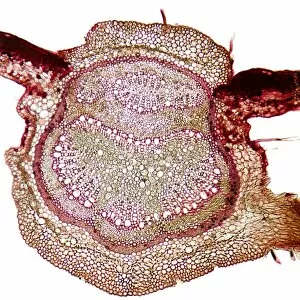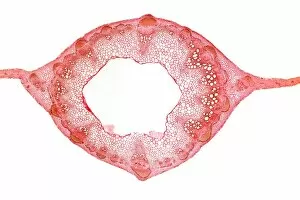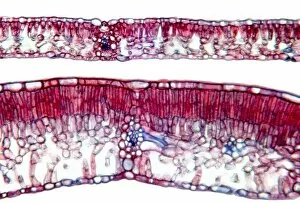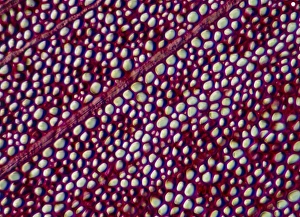Ground Tissue Collection
Ground tissue is the unsung hero of plant anatomy, providing support and essential functions for various parts of a plant
All Professionally Made to Order for Quick Shipping
Ground tissue is the unsung hero of plant anatomy, providing support and essential functions for various parts of a plant. From the intricate rhizome of Acorus calamus to the delicate stem tip of Asparagus, light micrographs reveal the fascinating world within these tissues. In the Acorus calamus rhizome, ground tissue forms a sturdy framework that anchors this aquatic plant in its environment. Its cells are tightly packed together, ensuring stability and strength against water currents. Similarly, in the Asparagus stem tip, ground tissue plays a crucial role in growth and development. These microscopic images showcase elongated cells arranged neatly to facilitate upward growth as new shoots emerge from below. The Beech tree leaf showcases another aspect of ground tissue's versatility. Here it acts as a protective layer against environmental stressors while also aiding in photosynthesis through specialized cells called mesophyll. Marrow stems exhibit an intriguing arrangement with scattered vascular bundles surrounded by parenchyma cells. This unique structure allows for efficient transport of nutrients throughout the plant. A closer look at Sycamore leaf veins reveals intricate patterns formed by xylem and phloem tissues embedded within ground tissue. These networks ensure proper distribution of water and nutrients to sustain healthy leaf function. Sweet pea stems display an organized arrangement of collenchyma cells within their ground tissue. This added structural support enables these climbing plants to reach great heights while maintaining flexibility. Once again, we encounter Beech tree leaves showcasing distinct layers within their ground tissue composition—epidermis protecting against external factors while palisade mesophyll maximizes sunlight absorption for energy production. Lastly, White bryony stems demonstrate how diverse plants can be even at a microscopic level. Ground tissues here contribute to both mechanical support and nutrient storage capabilities necessary for survival in harsh environments. These captivating light micrographs provide glimpses into the hidden world beneath our feet—the remarkable realm where ground tissue thrives.

